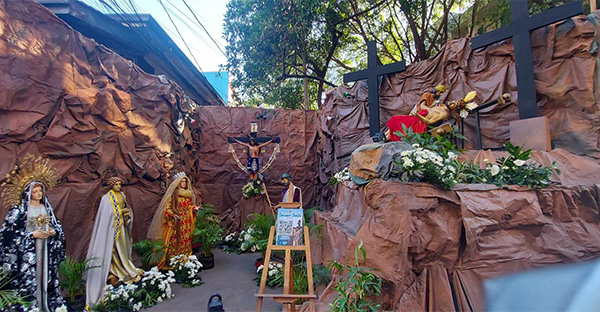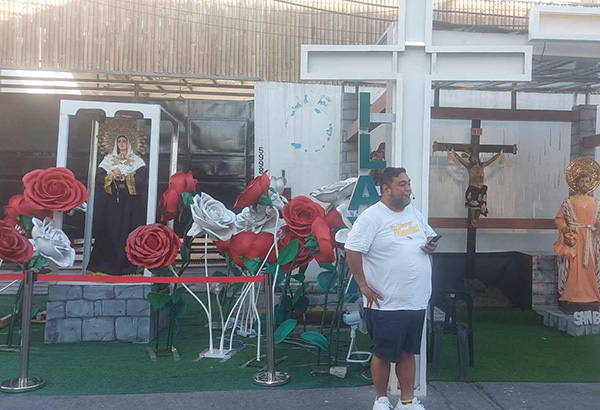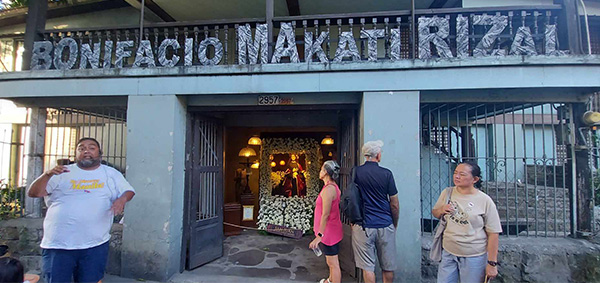Sinner and saint: Century-old Kalbaryo tradition persists amid Poblacion’s nightlife reputation
MAKATI, Philippines — Poblacion might be famously known nowadays as Makati City’s food and bar crawl hub, but beyond its red light district Burgos, this town in one of the country’s most advanced and progressive cities actually also caters to saints, not only sinners.
At tour guide company Wander Manila’s “Kalbaryos” tour yesterday, Maundy Thursday, Philstar.com and 49 other tour guests learned about one of Makati's most enduring Holy Week traditions, the Kalbaryos or small street churches, with less than 60 of them now dotting different streets of Poblacion.
Benjamin Canapi, Wander Manila’s head tour guide, told guests that it could be hard to believe that a custom like the Kalbaryos has continued in a modern city like Makati since the tradition began even before World War II, in 1920. From only one Kalbaryo in 1920, the Kalbaryos have increased through the years, and most especially, after the Second World War.
Sacred traditions were usually associated to provinces, said Canapi, so for a city tradition like the Kalbaryos to continue every year, and only interrupted by the COVID-19 pandemic, is quite remarkable.

According to Canapi, at first, one might think that the Kalbaryos got its name from Calvary, where Jesus Christ was crucified. The name, however, referred to Poblacion having an up-and-down terrain, making it a “kalbaryo” (arduous) to trek.

Also, contrary to popular opinion, the images in the Kalbaryos do not tend to link together to form the 14 Stations of the Cross. Rather, the statues are simply based on what the individuals or small associations taking care of the Kalbaryos have or want to put in the street churches. The images are then placed in backdrops ranging from simple to theatrical, complete with fresh flowers and waterfalls. Some Kalbaryos are placed in the middle of streets, while some serve as venues for prayers and Pabasa or the chanting of the Pasyon, a 16th-century epic poem narrating Jesus’ life, passion, death, and resurrection.

While most Kalbaryos are taken down by Black Saturday, Easter Sunday or after Holy Week, three are permanently housed in small chapels and are open all-year-round as venues for wakes, special occasions, or for just anyone who wants to stop by and pray.
Since most of the Kalbaryos are completed by Maundy Thursday, these depict some scenes from the Passion of Christ. One Kalbaryo bears a life-size Santo Entierro (Jesus’ burial statue) – with Makati’s oldest religious image believed to be 200 years old. Another is setup in one of only three remaining Bahay na Bato in Poblacion.

The scenes in the Kalbaryos might be sad, but these are offset by the funny names of the groups that assemble the small churches every year. Take for example the group “Bla-gag,” which actually just came from the sound one makes after falling off a chair for being too drunk after a drinking session; or D’Saint, where “Saint” simply means “SAmahan ng mga taga-Ilalim Ng Tulay;” or Poultry that took its name not from Saint Peter’s rooster, but from the poultry house that was once its neighbor.
Truly, said Canapi, these Kalbaryos are proof not only of Filipinos’ devotion – but also of sense of humor.

— Video by Deni Rose M. Afinidad-Bernardo, video editing by Martin Ramos




















